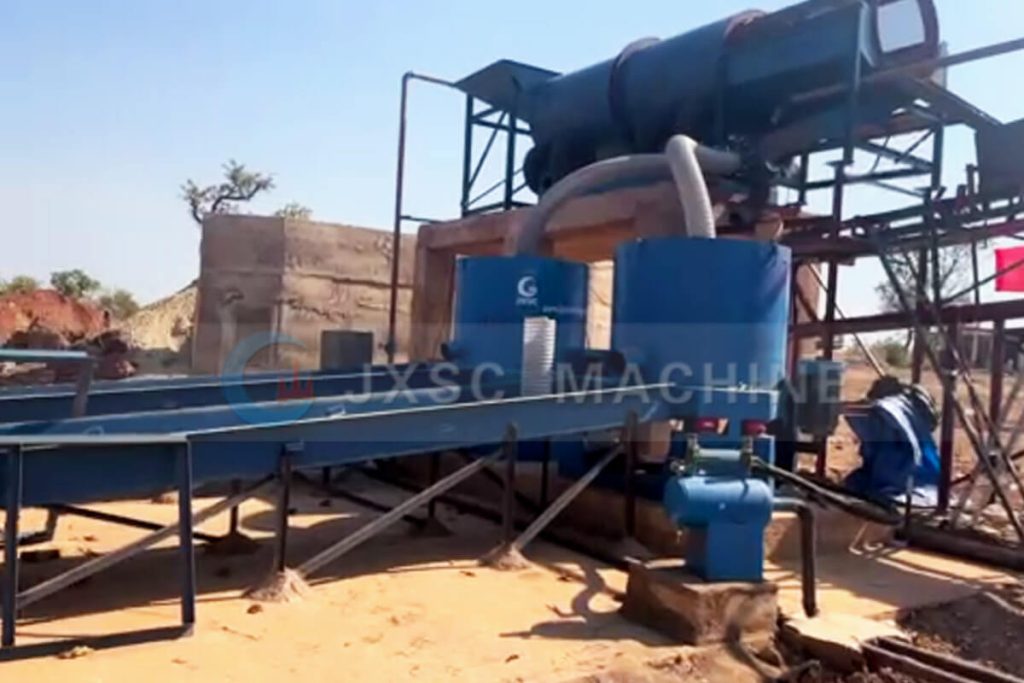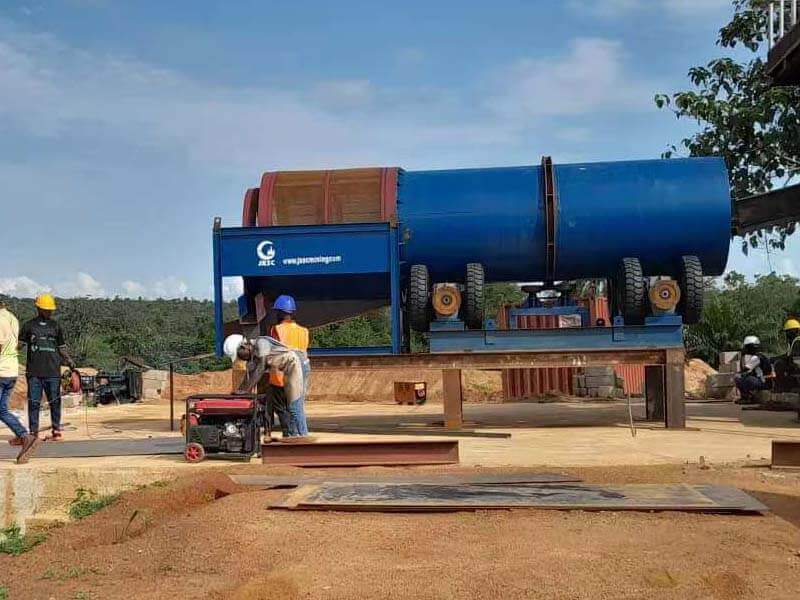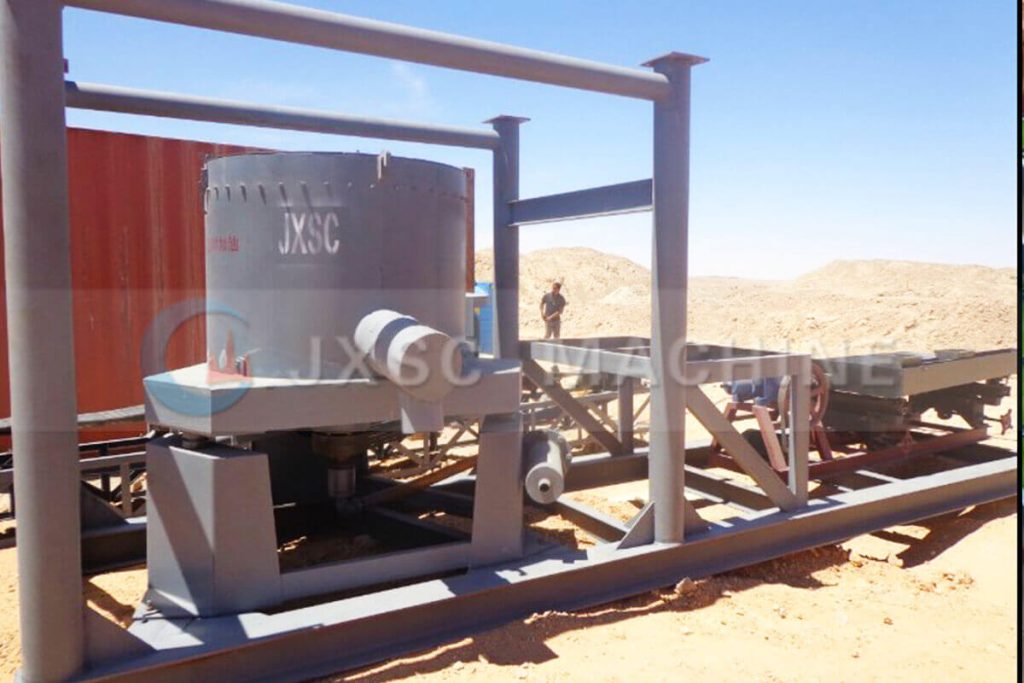Did you know that seemingly ordinary riverbed gravel may contain precious gold particles? Placer gold (alluvial gold) is a naturally formed loose gold ore, usually distributed in rivers, ancient riverbeds or seashore gravel layers. Unlike native gold mines buried deep underground, this type of gold is gradually stripped from the parent rock after long-term water erosion, forming fine particles or flakes, which are easy to collect. However, since placer gold often coexists with impurities such as quartz, black sand, and magnetite, improving its purity and recovery rate has always been a major challenge for the mining industry.
With the upgrading of jewelry consumption and the improvement of industrial gold precision requirements, the market continues to raise the purity of placer gold. Therefore, this article will introduce the modern mining industry is actively developing more advanced and more environmentally friendly placer gold purification technology.

Placer gold process includes pretreatment (washing & screening, crushing), gravity separation, flotation, magnetic separation or electrolytic separation, etc. It has become the most common beneficiation scheme for placer gold mining companies and beneficiation plants. This article will systematically introduce the most effective placer gold purification technology to help practitioners optimize the production process and achieve a dual increase in gold recovery rate and purity.
Basic Principles of Placer Gold Process Purification
In the gold placer processing process, the placer gold purification process is essentially to separate gold from impurities by physical or chemical methods. Natural gold placer usually contains mineral impurities such as quartz, iron ore, clay, and a small amount of other metals (such as silver and copper). Gold has become the core target of purification because of its high density (19.3 g/cm³) and chemical inertness.
These impurities mainly include sand, magnetic minerals (such as iron), heavy metals (such as copper and lead), and organic matter. Gold often exists in a free state under natural conditions because its density is much higher than that of ordinary minerals (density is about 19.3 g/cm³), but fine gold particles are often wrapped in impurities, so they need to be separated by physical or chemical means.
Purpose of placer gold purification
The core of placer gold purification is to remove impurities effectively, maximize the recovery of high-grade gold, and avoid gold loss. Traditional methods rely on gravity and manual panning, but modern technology combines physical sorting, chemical leaching, and electrolytic refining. For example, when the gold particles are large, gravity separation (such as shaking tables, or sluice boxes) can be used to separate them by density difference; when the gold particles are extremely small (such as micron level) or coexist with sulfide minerals, cyanidation or acid leaching is required to dissolve the gold and then recover it. The gold is gradually enriched by gravity separation, chemical leaching, or electrolysis, mainly by using the differences in density, solubility, and electrochemical properties between gold and impurities.
Placer Gold Process: Purification Technology
In the process of placer gold process, choosing the right purification technology is crucial, which directly affects the final purity and recovery rate of gold. The following are the five core technologies of pretreatment, gravity separation, flotation, magnetic separation and electrostatic separation to help efficiently obtain high-grade gold ore.
1. Pretreatment of Placer Gold
A key process to improve the treatability of ore. Placerous gold ore usually contains a lot of dirt, gravel and organic matter. Pretreatment can significantly improve the efficiency of subsequent sorting. Washing and screening can remove large particles of impurities, and crushing and grinding can release the encapsulated gold. If it contains a lot of clay, a trommel scrubber or desludging cyclone can be used to reduce mineral adhesion and fully expose the gold particles. Pretreatment can also adjust the pulp concentration and optimize the efficiency of gravity separation or flotation.


2. Gravity separation of placer gold
It is the preferred process for efficient enrichment of coarse or high-grade gold. Since the density of placer gold is much higher than that of gangue minerals, gravity separation becomes the most economical and basic purification method. Commonly used equipment includes shaking tables, jigs, spiral chutes, etc., which are suitable for the recovery of coarse (>0.1mm) free gold. Among them, shaking tables are suitable for the recovery of medium and fine gold, centrifugal concentrators are good at enriching fine gold, and jig separators are suitable for high-throughput separation of coarse gold. This method has simple equipment and low energy consumption, and is especially suitable for small and medium-sized gold processing plants. Gravity separation is usually used as the first gold process, which can recover more than 80% of free gold and needs to be optimized with other technologies.


3. Flotation Of Placer Gold
It is an effective means to recover fine particles or associated minerals. Flotation is effective for fine gold or placer gold associated with sulfide minerals (such as pyrite). By adding collectors (such as xanthate) and frothers, gold particles adhere to bubbles and are enriched in the foam layer. Flash flotation can reduce the loss of gold particles due to over-grinding, while carrier flotation can improve the recovery of ultra-fine particles. Flotation is particularly suitable for processing low-grade or complex associated ores, with a recovery rate of more than 90%.

4. Magnetic separation Of placer gold
It is mainly used to remove ferromagnetic impurities to purify gold concentrate. Placer gold ore often contains magnetic impurities such as magnetite and ilmenite, which affect the subsequent smelting or leaching effect. Magnetic separators (such as wet high-intensity magnetic separators) can efficiently remove iron minerals and improve the final purity of gold. Non-magnetic gangue (such as quartz) is not adsorbed to ensure the grade of gold concentrate. It is especially suitable for ores with high iron content. It is usually used as an auxiliary process in combination with gravity separation or flotation.
5. Electrostatic separation Of placer gold
It is mainly used to separate conductive minerals from gold. Electrostatic separation is based on the difference in mineral conductivity and is suitable for processing placer gold ores containing cassiterite, tungsten ore or graphite. The high-voltage electric field causes the conductive particles to adsorb on the electrodes, while non-conductors such as quartz are discharged. Compared with gravity separation, electrostatic separation has a higher recovery rate for fine gold (20-100μm) and no chemical pollution. However, the equipment investment is large and it is often used in the concentration stage to improve the quality of the final gold concentrate.
The placer gold processing requires the selection of a suitable combination of processes based on the properties of the ore (particle size, associated minerals, and impurities). Gravity separation is suitable for coarse gold, flotation is suitable for fine gold, magnetic separation and electrostatic separation can improve purity, and pretreatment optimizes the overall separation efficiency. By reasonably combining these five technologies, efficient purification of placer gold can be achieved, gold recovery rates can be increased, and costs can be reduced. Different ore characteristics determine the best process route, and the solution needs to be optimized in combination with experimental and production data.
How to choose placer gold purification process?
(1) Select the process according to the nature of the ore
If the gold placer ore is mainly in a coarse-grained free state, gravity separation (such as shaking table, jig) can be efficiently enriched; but if the gold particles are fine inclusions or coexist with sulfides, chemical methods such as flotation, cyanide leaching or bio-oxidation must be used.
(2) Comply with environmental protection and regulatory requirements
In areas where cyanide gold extraction is restricted, cyanide-free processes (such as thiosulfate method) can be selected, and a closed-loop circulation system can be used to reduce pollution. Dry sorting is suitable for arid areas, and low-energy consumption methods (such as gravity separation) are preferred when electricity is insufficient. Environmental compliance determines long-term operating risks.
(3) Matching technology and scale requirements
For the recovery of fine gold particles, the centrifugal concentrator has a small processing capacity but a recovery rate of more than 90%, which is suitable for high-grade ores. The heap leaching, CIP, and CIL methods are suitable for processing low-grade ores of millions of tons, but the construction period is long. Small operations can use a simple shaking table + magnetic separation, and large mines are suitable for the “gravity separation-leaching-electrolysis” combined process.
Gold with insufficient purity is difficult to refine to meet refining standards, and inefficient extraction methods will waste precious resources. We provide various types of gold processing solutions and equipment, such as gravity separation, flotation, magnetic separation, electrostatic separation, CIP, CIL, etc. Whether it is a small gold prospector or a large mining company, mastering these key technologies means higher profits and lower ecological impact. Contact us now to get professional solutions to improve the grade of placer gold!